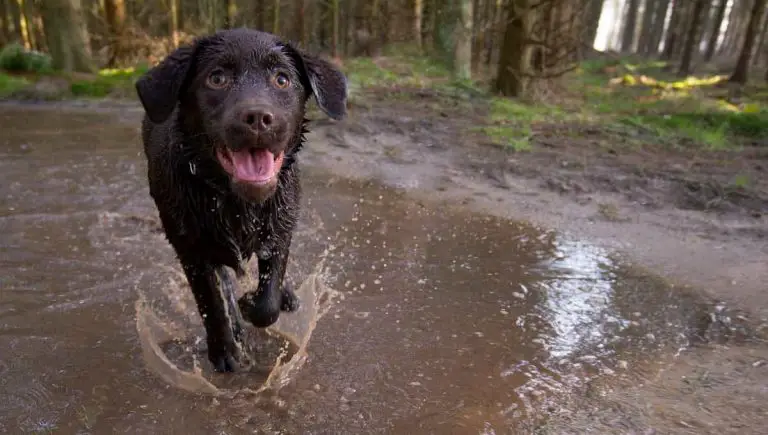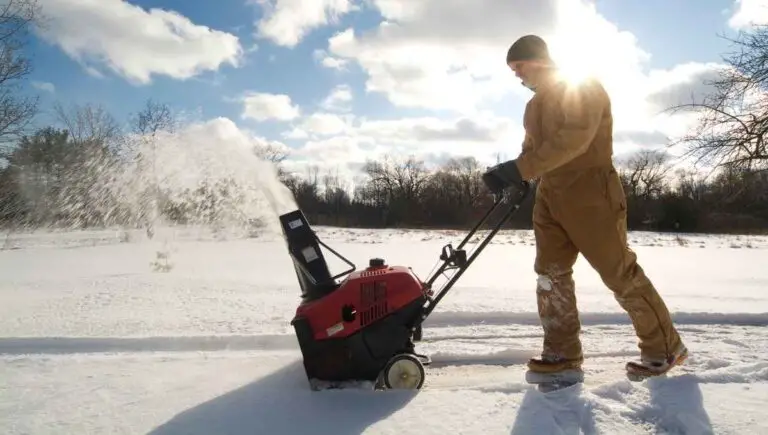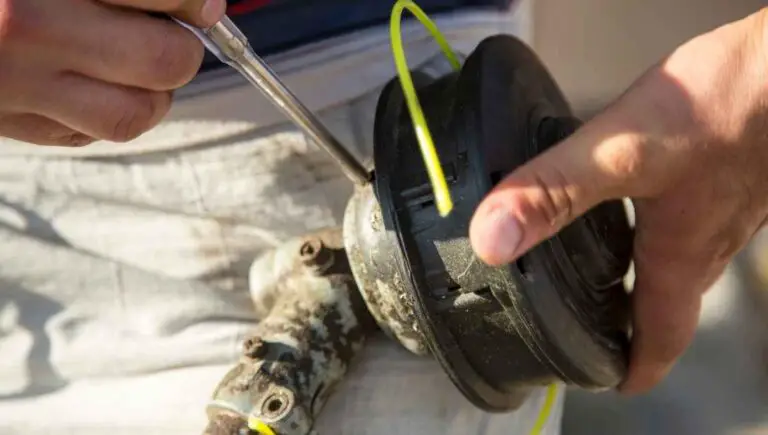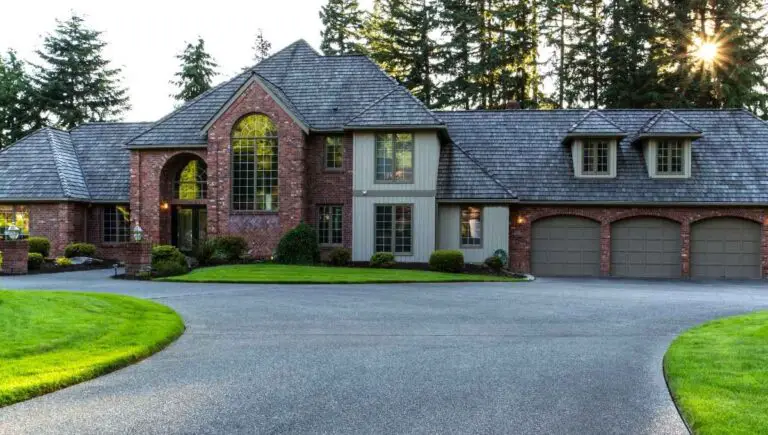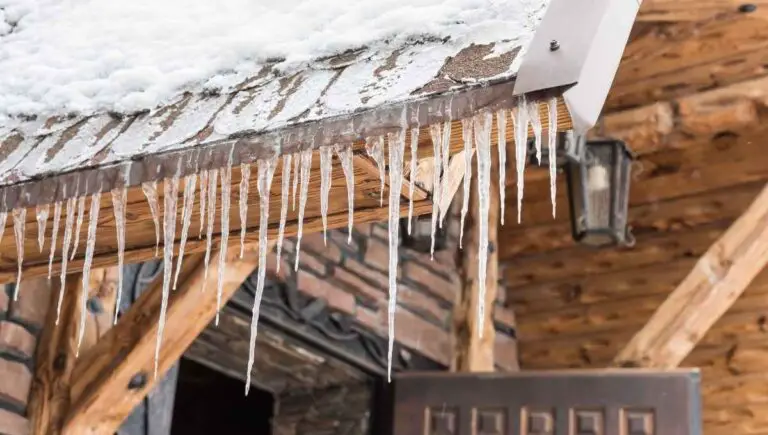Yard Slopes Towards Your House? (This Fix Saves Thousands)
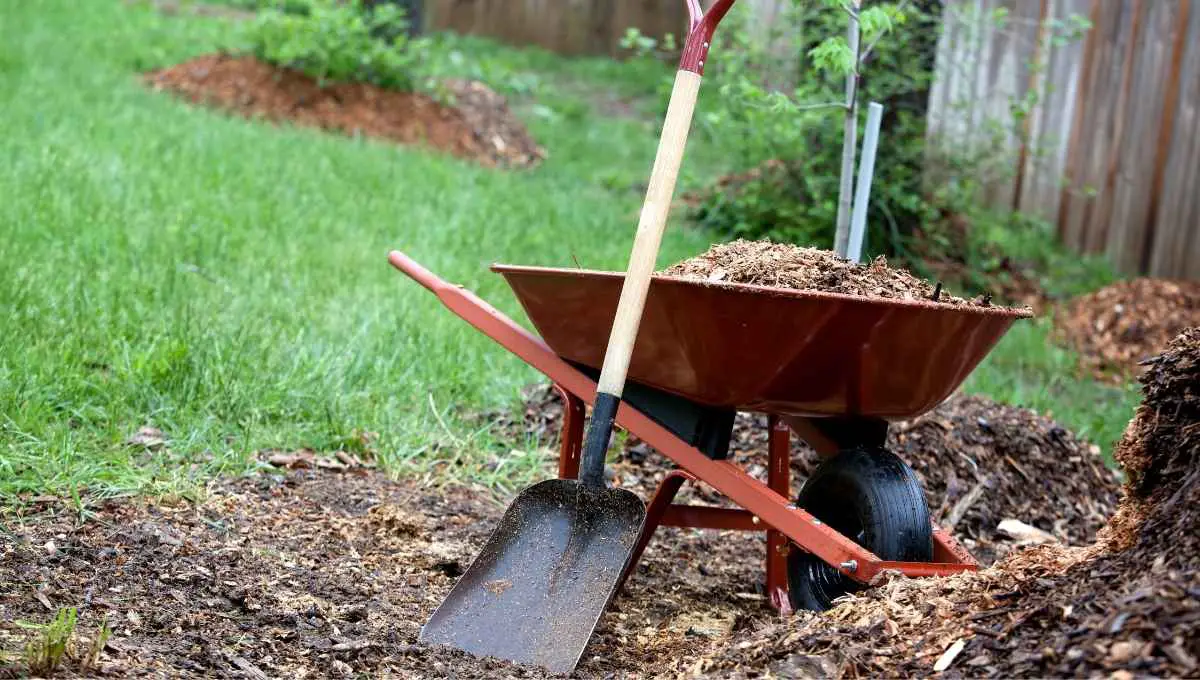
It can be tricky to know how to deal with a slope in your yard. If the slope is towards your house, it can cause water to accumulate and even damage your home. Fortunately, there are some things you can do to mitigate these problems.
If your yard slopes towards your house, you should take immediate measures to prevent water from pooling near your home. The best way to do this is by regrading the soil so that it slopes away from your house. It’s recommended to contact a professional landscaper to do this for you.
Realizing that your yard needs to be regraded can be daunting, but it’s important to take action as soon as possible. A little bit of work now can save you a lot of headaches (and money) down the road.
In this blog post, we’ll share some tips on how to regrade your yard so that it slopes away from your house instead of towards it. We’ll also cover some alternative methods of dealing with a sloping yard.
This post contains affiliate links from Amazon and other stores. This means Yard Blogger may earn a commission if you make a purchase using any of our links. Please refer to our full affiliate disclosure policy for full details.
Here’s a Quick Pro Tip!
Although regrading your yard might seem like an enormous challenge, we’ve made it as easy as possible for you in this article. However, there are a few products that you would need to attempt this project.
Our top picks for regrading your lawn:
1. Flat Square Garden Spade – Perfect to dig up and move the topsoil of your yard.
2. Five-foot Metal Rake – Ideal to flatten out your topsoil after moving it with the shovel.
3. Magnetic Leveler – Great to test the slope of your yard.
What’s Wrong With Your Slope?
Your back, front, or side yard should not be sloping towards your house. This is called a negative slope and it could cause long-term water damage to your house’s foundation. Let’s discuss the details of a negative slope.
What Do You Do When Your Yard Slopes to Your House?
Regrading, or leveling out, your lawn is the best way to fix the slope toward your house. By removing the topsoil from your highest point and moving it to your lowest point, you could reduce the slope towards your house.
Although, this is not something that should be done without thorough planning. Take into consideration any pipes or vents that could be disrupted.
We recommend contacting a professional to ensure you don’t block any important features.
Should a Lawn Slope Towards or Away From the House?
Ideally, your lawn should slope away from the house for the first ten feet around your house. The best ratio is roughly two to five inches for every ten feet. The first ten feet should have at least a 5% slope away from the house.
You do not want water pooling right next to the foundation of your house. This could cause water damage or problems in the future — especially if your neighbor decides to drain their pool into your yard!
Yard grading is helpful to resurrect standing water in different areas of your yard.
Should the Lawn Slope Away From the House?
The lawn should slope away from the house. Any slope between 3% and 25% away from the house is acceptable. If your lawn is not within these figures or slopes toward the house, you should consult a professional.
A lawn that slopes toward the house could cause water damage to the foundation of your house and should be fixed as soon as possible.
The most popular way to do this is by grading your yard to allow rainwater to flow away from your house.
What to Do if Your House Is on a Downward Slope?
There are two solutions to correct a downward slope toward your house. The most popular is to regrade your lawn to create a slope away from your house. Another solution is to use a drain to move water away from the foundation.
You have a choice between a trench drain and a french drain, the latter being more popular.
A french drain is a pipe that is installed along the foundation of your house and leads it away from the foundation.
What Can I Do About a Sloping Side of My Yard?
There are two solutions to a yard sloping toward your house. First, you could contact a professional to regrade your lawn or you could install a drain. A drain will move water away from your home, preventing water damage to the foundation.
If your project is fairly simple, you should be able to regrade your yard yourself.
However, if you have rocks, trees, or an extremely steep slope as obstacles it would be better to contact a professional as heavy equipment might be needed.
Yard Drainage
Understanding what a negative slope is, is important. But what should you do if you have this problem? How do you keep water away from your house?
Let’s dive into the details of proper yard drainage.
How Do You Redirect Water Runoff?
To redirect water running toward your house you could install a french drain to collect water below the surface and transport it away. However, installing a french drain can get tricky due to shallow pipes near your home.
Alternatively, you could hire a professional to regrade your lawn to alter the slope at which water runs off your lawn.
In most cases, regrading requires heavy machinery so you would need to consult with a professional.
How Do You Drain a Sloped Yard?
Installing a french or trench drain is the best unnoticeable solution to drain a sloped yard. Alternatively, you could build retaining walls to simultaneously drain and decorate your lawn. Additionally, these walls make beautiful landscaping.
Contrary to what it sounds like, these walls don’t hold the water back but encourage drainage by creating large gaps for water to flow through.
A dry well is a great solution if your area has a lot of rain. These wells collect and hold up to 50 gallons of water underground.
You might also enjoy our post on If You Need a Permit to Regrade Your Yard
How Do You Keep Water Away From Your House From Landscaping?
Landscaping elements such as rain gardens and native plants can help to keep water away from your house. Landscaping can be more than a mere accessory to your property.
Rain gardens generally are placed toward the edge of your yard and are full of low-maintenance plants.
These plants are rooted in a blend of sand, compost, and the existing topsoil to ensure drainage and control erosion.
Native plants act as a natural barrier to erosion and are most likely to thrive in your garden. Their roots also tend to hold more water, preventing water from standing still on your lawn.
Before landscaping, do some research on the native plants and trees of your area.
How Do You Divert Water From House to Slope?
Aside from proper yard grading, French drains could also be used to divert water away from your house. This drain collects water near your foundation and carries it away from the house.
An easier solution might be to extend your gutters at least six feet away from the home. You can use downspout extenders, which can be bought online or at any local hardware store.
Although these extenders might not help if your lawn has a negative slope.
How to Grade Your Yard for Drainage?
You would need to create a slope of at least 2% away from your home for proper drainage. You’ll need to level out your yard and move the topsoil of the highest point to right next to your foundation.
Steps to grade your yard:
- Before attempting to dig anything, first, check your local zoning commission and state homeowner permits. Most times you should be okay with no permit, but better safe than sorry!
- Check for any water, gas, or electric lines that might be running underneath your lawn. Mark these with flags or anything colorful to ensure you don’t disturb these lines while digging.
- Identify the high points of your yard, you’ll be digging there the most.
- Remove about 10 inches of topsoil from most of your yard, more or less depending on the high points. The goal is first to level out your yard, so use your own discretion. (Don’t throw away that topsoil!)
- If you don’t feel like digging up your entire yard, you could simply order a truckload of topsoil (make sure it’s locally sourced).
- To check if your yard is level, use two stakes. Plant one right next to your house foundation and another at the edge of your property, where you would like the water to drain. Connect the stakes with a piece of string, and you’ll easily see if the string is sloped or level.
- Now get that topsoil that you set aside and start to pack it around your foundation. You want the area around your house to be the highest point of your yard. Use the back of a rake to smooth the dirt around your house.
- Periodically check the slope of your lawn. To do this take those two stakes again, plant them at the same spots and connect them with a piece of string. Use a leveler and a measuring tape to check the slope of your yawn, away from the house.
Landscape Concerns
Most people don’t have simple flat grass yards. Landscaping is a popular and time-consuming addition to any property.
You should ensure that your landscaping is also allowing water to run away from your house.
How Do You Landscape a Front Yard That Slopes Toward the House?
A retaining wall could be a beautiful landscaping element while also preventing water runoff toward your house. Simply install a vertical wall that is slightly higher than the negative slope of your front yard.
A retaining wall can be made of decorative stone or simple concrete blocks.
They can be decorated with native plants and trees to add to the visual aesthetic while also holding water in the soil instead of running toward your house.
How Do You Landscape a Backyard That Slopes Toward the House?
Regrading your backyard is the best solution to a negative slope (toward the house). Although this might take some time, effort, and sometimes professional help. Terraces are a great alternative for your backyard.
Terraces are several flat areas along the slope where water can absorb into the soil, instead of running toward the house.
These could be decorated with stones and the flat surfaces could be used for flowers, seating, or even a grill.
You might also enjoy our post on How to Block Water Drainage From Your Neighbor’s Yard
How Do You Landscape a Side Yard That Slopes Toward the House?
Regrading the soil of your side yard would be the best solution, as decorative landscaping could obstruct the movement of people, pets, or even vehicles. Another non-hindering solution is installing a french drain.
A french drain collects water and moves it to a secondary location, which you can decide. This can be like a street water drain or simply to the edge of your property.
It would however require digging a trench to install the drain.
How Do You Landscape a Steep Slope for Beauty and Low Maintenance?
Besides installing a retaining wall, simply stabilizing the soil with native plants and trees could be a beautiful yet low-maintenance solution. The roots of the plants will prevent eroding and water run off when it rains.
Another low-maintenance solution would be to install a deck. A deck could offer an area for recreation for your family, especially in the summer.
You could decorate the deck with outdoor furniture or even a barbeque grill.
How Do You Landscape a Steep Slope on a Budget?
To landscape a steep slope on a budget we recommend planting native flowers, shrubs, or trees. These are budget-friendly and low-maintenance landscaping options for any steep slope.
If your slope already has some natural vegetation, including a rock stairway could be a great landscaping focal point.
If your house is atop a steep slope it could also make it more accessible to reach.
Leveling
We’ve talked about negative slopes and correct slopes but not much about a level yard. Contrary to what you might think, it is not good to have a yard that is completely level.
Let’s discuss why.
How Do I Level My Backyard to Prevent Flooding?
You can level out your backyard with a shovel and rake or with heavy machinery, depending on the size and obstacles in your yard. Although, leveling your yard would not solve or prevent flooding issues.
On the contrary, it would cause pools of still standing water. Your yard should have a downward slope of at least 2% away from your house.
This allows water to run off of your property and prevents flooding.
How Do You Level a Sloping Side Yard?
To level a sloping side yard you could fill the low points with a mixture of soil (topsoil, sand, and compost). This can be done by hand or with heavy machinery, depending on the size of the project.
You purchase this mixture of soil from a local landscaper, or you could dig up the topsoil of the high points in your yard and move it to the low points.
This will take some time and effort, but in the end, you will be able to level a sloping side yard.
It’s not recommended to have your lawn exactly level as this will encourage still-standing water puddles when it rains.
Rather, ensure that your yard has at least a 2% slope away from your house to run water away.
How Do I Elevate My Yard?
To elevate your yard you would need to detach at minimum the top eight inches of soil, grass, and any plants in your entire yard. Be sure to leave the water, gas, and electric lines under your lawn undisturbed.
You could do this with a shovel and a rake or hire a professional to use heavy machinery. Purchase a truckload of topsoil, preferably locally sourced, and use the rake to level it over your entire yawn.
Lastly, reinstall the topsoil that you removed initially to get an elevated yard.
How Hard Is It to Level a Yard?
Depending on the size of your project, it could be rather easy or extremely laborious to level your yard. Obstacles such as plants, trees, water lines, electric lines, or previous landscaping could prove the difference.
It’s always recommended to consult a professional about your plans. They might have insight regarding the difficulty of your project, digging permits, or general advice.
That being said, it is entirely possible to level your yard by yourself with time and dedication.
How Do You Level Ground by Hand?
To level a piece of ground, first identify the high and low points. Then, remove the topsoil from the high points and transfer it to the low points with a shovel. This might take more time than a machine, but it can be done.
After moving the topsoil from the high points to the low points, you should smooth the ground with the back of a rake.
You can then replant any flowers, shrubs, or trees. Having multiple people work together would also shorten the time frame.
Related Questions
How Do You Divert Groundwater From Your House?
A french drain is the best solution to divert underground water from damaging the foundation of your house. In some states, building codes require a permit for french drains and where they lead to.
These drains are installed in a trench near the foundation of your home. It collects the water and moves it to the edge of your property, usually a storm drain.
You can purchase the pipes and install the drain by yourself or hire a professional for peace of mind.
How Do You Direct Water Away From a House Foundation?
Yard grading is essential to direct water away from a house foundation. Your yard should have at least a 2% slope away from your house to ensure water does not run to the house and collect around the foundation.
Alternatively, installing a french drain could also collect and direct water away from the foundation of your house.
These drains are relatively easy to install and are a great “unnoticeable” solution.
How Do You Fix a Negative Slope in My House?
To fix a negative slope, you should regrade your yard. This is a process of changing the slope percentage of your yard. This can be done by hand with a shovel or with the help of heavy machinery.
Remove the topsoil of the negative slope and add new topsoil around your house. This should force the water to run away from your house.
You can read our step-by-step guide on how to regrade your yard in this article.
Final Thoughts
There you have it, we got down and dirty about soil – more specifically, yard grading.
Hopefully, this article has inspired you to check your yard slope and if something is amiss, don’t fret. We’ve listed and discussed all the necessary steps!






